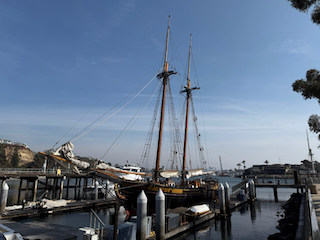
-
| 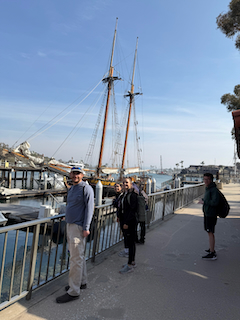
-
| 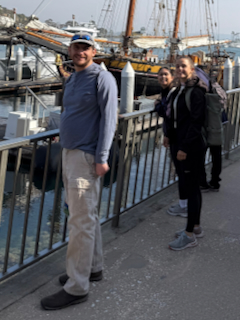
-
|
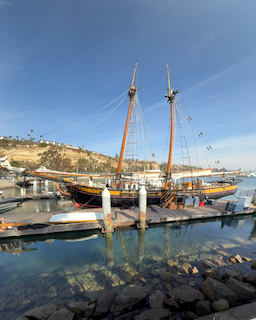
-
| 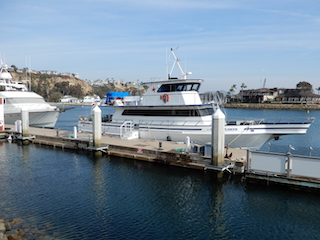
-
| 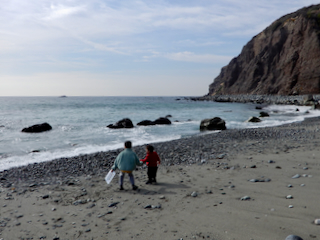
-
|
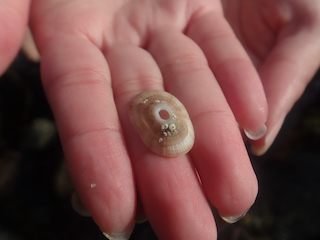
shell of juvenile giant keyhole limpet (Megathura crenulata)
| 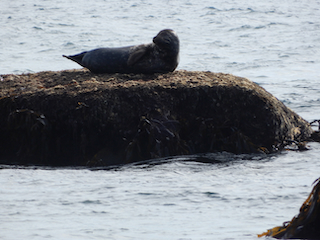
harbor seal (Phoca vitulina)
| 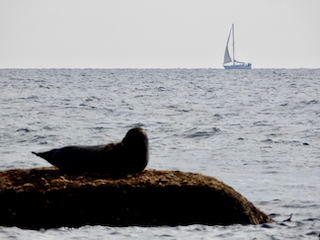
-
|
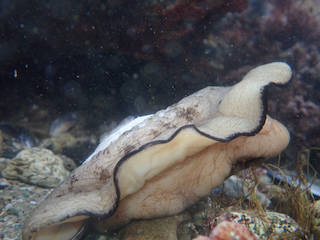
giant keyhole limpet (Megathura crenulata)
| 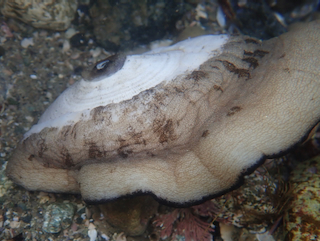
-
| 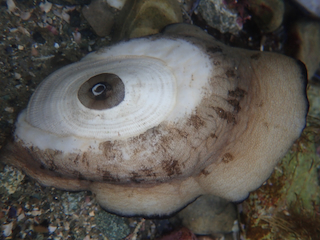
-
|
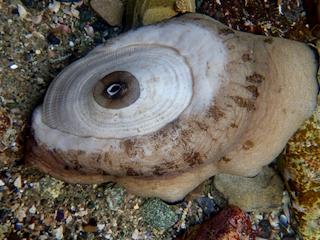
-
| 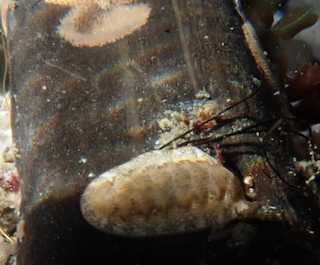
Lepdizona pectinulata is a chiton species lacking an easy common name, even though it is common
under rocks, restricted to no further north than southern California (the northern half of the warm-temperate Californian marine biogeographic province).
Note that the several other species of Lepidozona treated
in our California field guide for the intertidal are instead found further north, from central California to southeastern Alaska
(the cool-temperate Oregonian province).
| 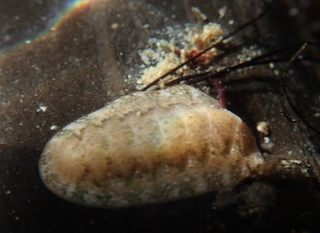
-
|
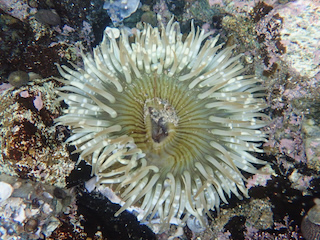
sunburst anemone (Anthopleura sola)
| 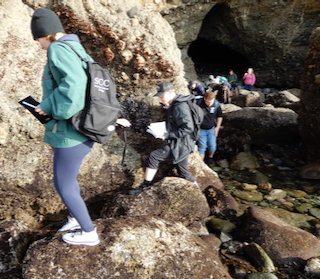
-
| 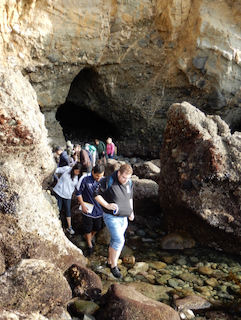
-
|
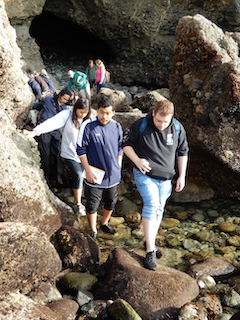
-
| 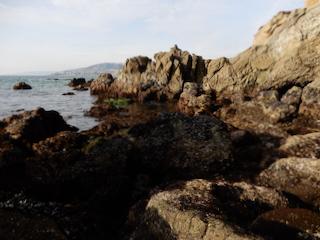
-
| 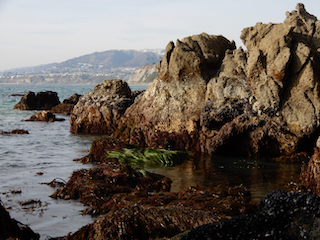
-
|
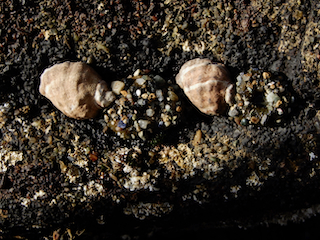
-
| 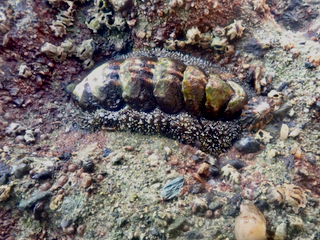
The southern spiny chiton (Nuttallina fluxa) can be extremely common in the southern California
mid intertidal zone, where it tends to be out in the open but nestled down in irregular depressions, or if the rock is soft enough in a home scar made by one
of more of its species. At the anterior end of this one is a limpet, Lottia conus, in an odd position for low tide or perhaps an empty shell.
| 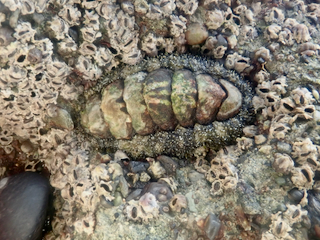
-
|
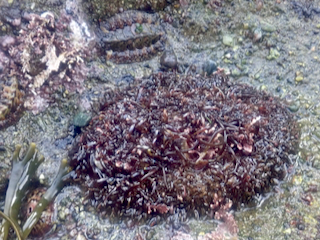
Red algae are thriving attached to the shell plates of this mossy chiton, Mopalia
muscosa, perhaps because the chiton would have eaten them if they were attached to the nearby rock. There is a smaller chiton, Mopalia ciliata, behind
the mossy chiton, and a Nuttallina fluxa cut off on the left side.
| 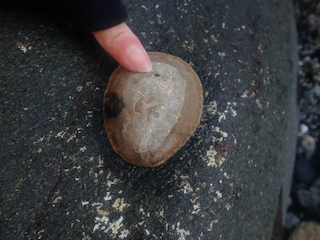
owl limpet (Lottia gigantea)
| 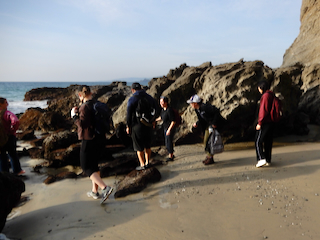
-
|
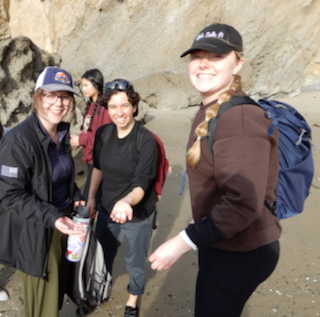
-
| 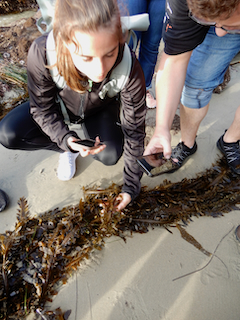
-
| 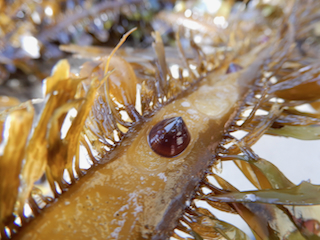
The seaweed limpets (Lottia insessa) make depressions in the central strap-like rachis of the
feather boa kelp (Egregia menziesii).
|
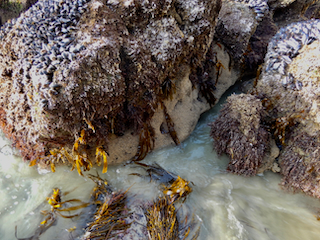
-
| 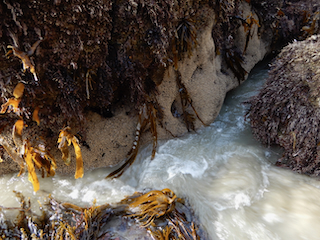
sand castle worms (Phragmatopoma californica) and some southern sea palm kelp (Eisenia
arborea) on the left.
| 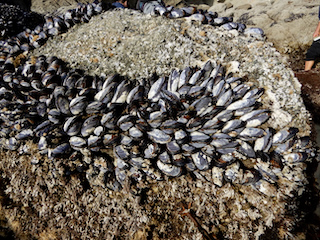
California mussels (Mytilus californianus)
|
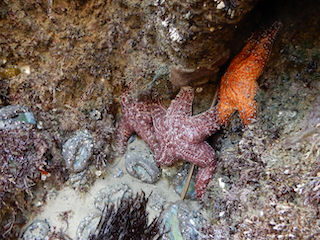
ochre sea stars (Pisaster ochraceus)
| 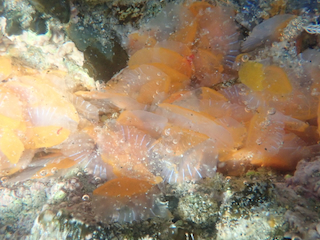
-
| 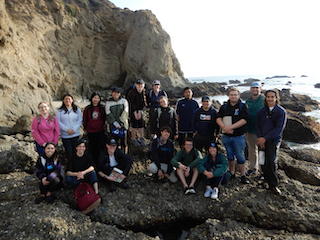
-
|
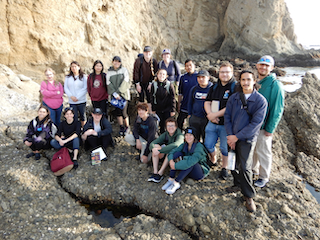
-
| 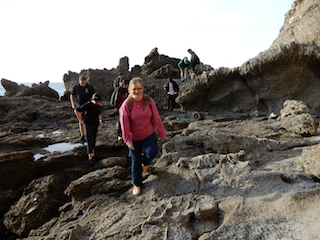
-
| 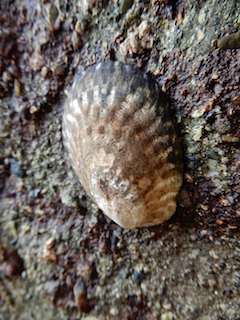
owl limpet (Lottia gigantea)
|
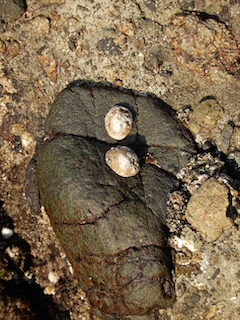
-
| 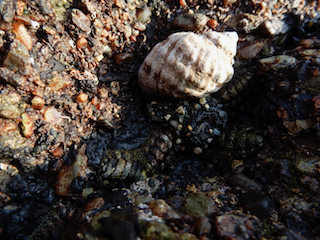
On this visit it seemed the dark unicorn whelk, Mexacanthina lugubris, were more common than ever.
They were earlier common as far north as La Jolla, in San Diego County, but they started showing up at some Orange County rocky beach localities around 20 years ago,
and have since become
locally common along Orange County shores, with some recent reports as far north as the Malibu coastline in Los Angeles County, according to iNaturalist reports.
| 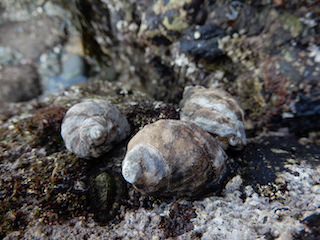
Adding a large predator that was not present earlier can have important
ecological impacts for Southern California intertidal communities. It is much larger than our many other muricid snails (Muricidae),
but like them the females
lay egg capsules attached to the rocks, and all or most of our muricide species have hungry crawl-away juveniles hatching without a planktonic stage,
so once established M. lugubris is likely to build up impressive numbers.
|
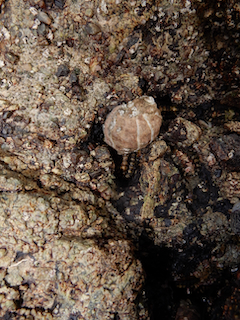
-
| 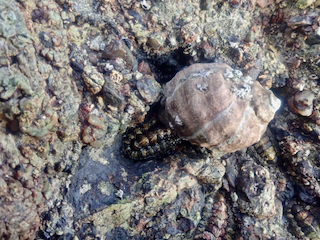
I have recently feared that the new presence of M. lugubris could negatively impact our
California mussel (Mytilus californianus) beds, and it seems these had already been declining perhaps due to sea water warming, human trampling, and
infrequent larval recruitment, but on this visit I also saw for the first time I recall that some appeared to be feeding on southern spiny chitons. Yikes!
| 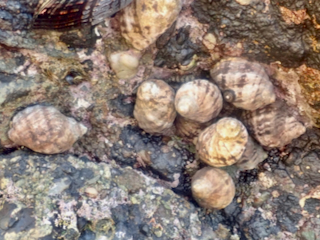
-
|
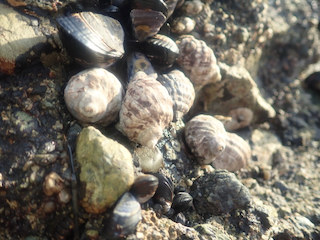
-
| 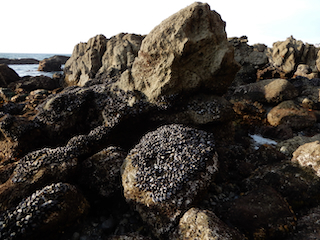
-
| 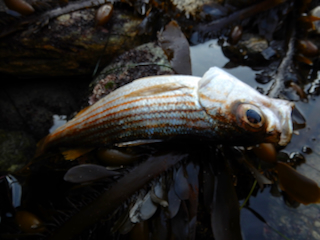
California salema (Brachygenys californiensis)
|
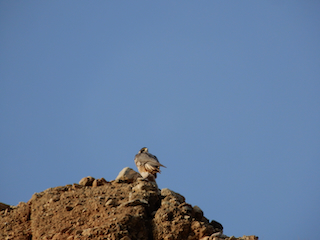
-
| 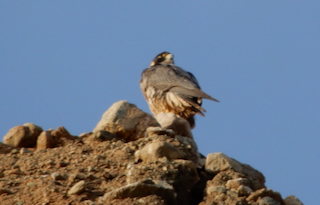
Peregrine falcons (Falco peregrinus) nest at Dana Point. This widespread predator on birds
was considered endangered in many areas but has recovered after the ban on DDT in the early 1970s, and through programs of protecting nest sites and from
reintroductions.
| 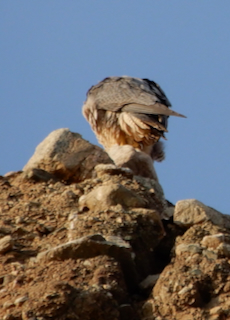
-
|
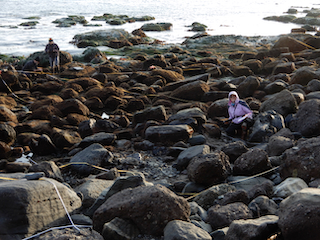
We saw Dr. Jennifer Burnaford (CSUF) and Dr. Jason Smith (Cal Poly Pomona) and students
conducting
periodic ecological surveys closer to the harbor.
| 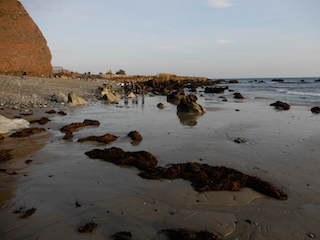
-
| 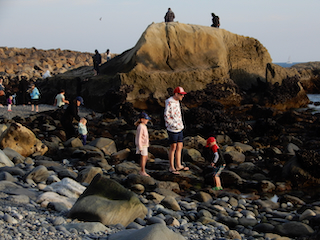
-
|
 Under Construction!
Under Construction! Under Construction!
Under Construction!